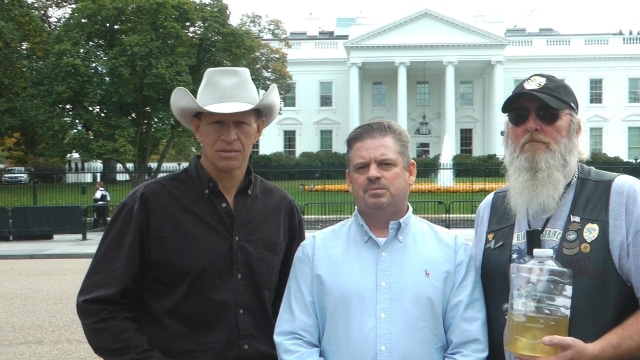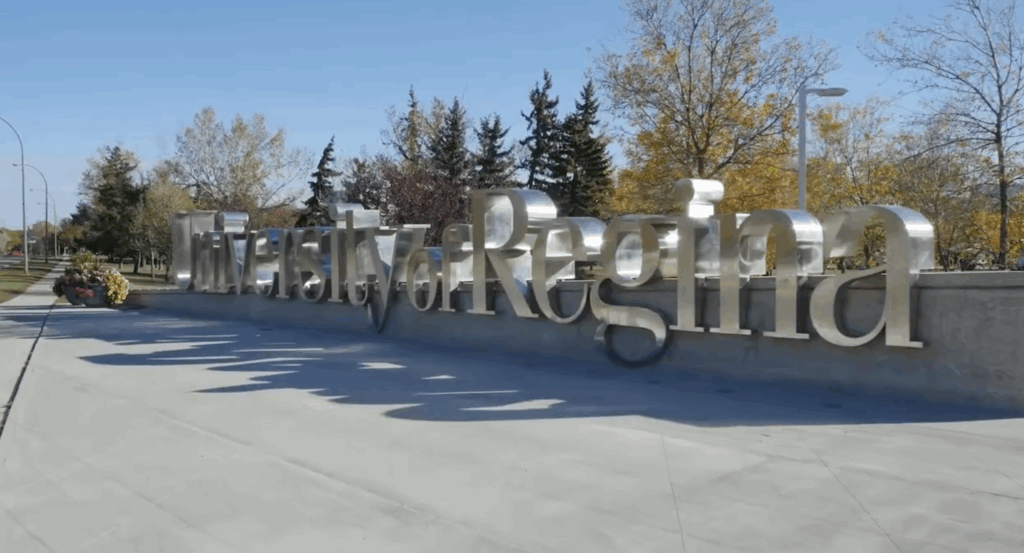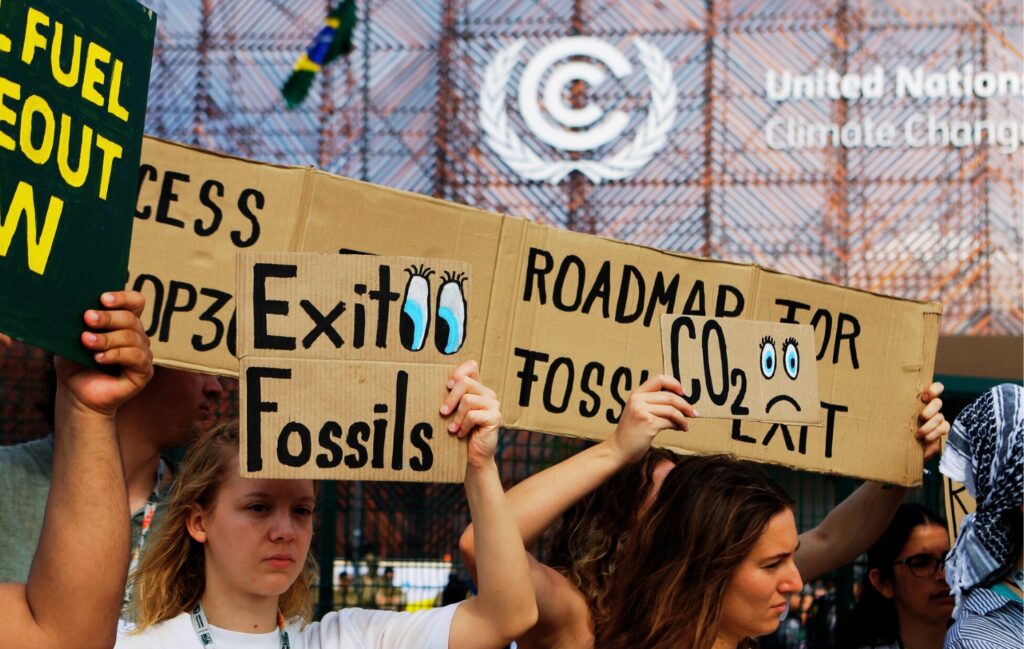For the past five years, the EPA has undertaken a highly-consequential national study on the impacts that hydraulic fracturing (fracking) can have on American drinking water supplies.
“The agency will look to the results of this program as the basis for its scientific conclusions and recommendations on hydraulic fracturing,” EPA said in a 2013 statement.
This June, the national study’s draft assessment was released to the public, and while hundreds of spills, accidents, and even cases where fracking itself directly contaminated underground aquifers (a method of pollution that the oil industry had long argued had never happened) were reported by EPA, it was a phrase from the agency’s press release that drew the attention of the national media: “hydraulic fracturing activities in the U.S. are carried out in a way that have not led to widespread, systemic impacts on drinking water resources.”
It was a line that outraged those living on the front lines of the shale gas rush, where rural homeowners have been forced to draw their drinking water from “water buffaloes,” or large tanks — no longer able to drink from their wells after the water turned odd colors, became laced with chemicals, or even could be lit on fire.
A group of these individuals — all tied to some of the highest-profile multi-year battles over fracking and water contamination nationwide — arrived at a meeting of the EPA‘s Scientific Advisory Board (SAB) last Wednesday, Oct. 28th, to ask why the pollution at their homes and in their communities had been left out of EPA‘s draft assessment.
Ray Kemble, wearing a baseball cap and leather vest, brought a yellowish-green jug of water from his home in Dimock, PA, and pre-tests showing that there was nothing wrong with his water before drilling and fracking.
“I’d love to know why Dimock wasn’t even included in this new study you did,” Mr. Kemble told the SAB. “I still don’t have water at my house.”
“All I want is you to come back and do your damn job and tell us the truth,” he told the assembled scientists.
It was a demand echoed by the other landowners that afternoon.
“At this point, I’m done. I don’t know what to do. I feel that the EPA abandoned me,” said Steven Lipsky, of Parker County, Texas, who is currently being sued for defamation by drilling company Range Resources after EPA dropped its investigation into the flammable water at his home. Mr. Lipsky brought footage that he said was filmed earlier that week and showed an office-cooler style jug half-filled with his water that burst into flames when a lighter was waved near the top.
“This is just my water, lighting on fire. It’s not a hoax, you can come and see it.”
“This has ruined my life for the last five years, it ruins my family’s life and, again, I just want to move on,” Mr. Lipsky told the EPA.
The landowners described first-hand their struggles to get state regulators to properly investigate reported contamination.
“My water began tasting like metal in March of 2013. And after two weeks I began having spontaneous nosebleeds, 8 over two weeks. They stopped when I ceased drinking my water,” Craig Stevens of Silver Lake Township, PA said, describing how his calls to report the problem were not returned by state agencies.
“Who do you think is going to be stuck cleaning up this mess?” Mr. Stevens asked the panel, citing layoffs in the drilling industry as a sign of their looming financial difficulties.
While the economic benefits of the shale gas rush have been widely touted, those on the front lines urged the EPA to remember that not everyone got rich. “We got $7.50 an acre,” Ron Gulla, who leased his land for one of the first Marcellus shale wells in Pennsylvania, but found that the costs incurred later far outweighed the money from leasing or the free shale gas the industry provided.
“I’ll introduce you to people that are sick. I’ll introduce you to people whose wells are contaminated,” he said, inviting scientists to come visit his community now. “You know how many people have lost cattle and have not been compensated?”
John Fenton, of Pavillion, WY, described his sense of hope when EPA first arrived to conduct tests on the drinking water in his hometown.
“One of the biggest things for us is that we tried for years and years and years to get the state of Wyoming to come and listen to the problems that we were having and were constantly met by excuses of not having money or manpower or scientific knowledge. So therefore when we actually got EPA to agree to come in and do a groundwater study, we were very excited that we got some knowledge and some people that were trained to specifically look at the issues that we were dealing with.”
But in 2013, the EPA abandoned its investigation into the water contamination in Pavillion. “The EPA folded,” Mr. Fenton said.
He criticized the draft assessment for failing to include the type of new research that EPA had originally planned to conduct. When the draft’s conclusions after years of research was first published, those who hoped that the new report would help resolve questions swirling around fracking were largely disappointed, with scientists describing the EPA‘s approach as largely a review of the current literature. Plans to conduct tests at a site before and after fracking had been slashed from EPA‘s study, and EPA also heavily relied on data that was self-reported by drillers.
“This has to be an on the ground study,” Mr. Fenton told the panel. “This has to be more inclusive with the people who are directly impacted, not just the people who are making profit from this.”
A string of representatives from environmental organizations and scientists also testified at the SAB‘s public comment session, and without exception, each criticized the passages from EPA‘s assessment and press release disclaiming “widespread” and “systemic” contamination from fracking.
“The statement implies that while evidence might come to light pointing to a different conclusion, the available data allowed EPA to make this judgment,” Dusty Horwitt, Senior Counsel with Partnership for Policy Integrity, told the panel. “However, the body of the report highlights so many data gaps, no reasonable scientist could have drawn a conclusion about how widespread or systemic the impacts were.”
The repeated critiques seemed to potentially resonate with member’s of the EPA‘s Science Advisory Board, according to those present at the hearing. On Thursday, when the panel was tasked with considering whether the executive summary was clear, consise and consistent with the major findings of the assessment, one of the panelists, Prof. Thomas M. Young of the University of California, Davis, suggested new wording that instead highlighted uncertainties and the presence of severe local impacts.
“To the shock of the rest of us in the room, the panelists erupted in applause,” Dr. Hugh MacMillan, a senior researcher for Food and Water Watch who attended the hearing on Thursday, told DeSmog.
The panel’s chair, Dr. David Dzomback, then asked whether any panelists present agreed with the executive summary’s finding of no “widespread, systemic” impacts. “Only one of the panelists [Dean N. Malouta of White Mountain Energy Consulting, LLC] said yes, a representative of the oil and gas industry,” Dr. MacMillan added.
Many of those testifying also criticized the agency for dropping its plans to conduct so-called “prospective” testing, which would have involved arranging with a drilling company for scientists to conduct water quality tests at a drilling site before and after fracking was done. Those plans were slashed from the EPA‘s study.
“In the study plan, we had outlined that prospective case studies might inform our understanding of hydraulic fracturing in ways not possible by looking at existing sites,” Dr. Jeffrey Frithson, of the EPA‘s Office of Research and Development, told the crowd at the hearing on Friday. “For several reasons, it just didn’t come about.”
But the reasons that the prospective studies were dropped were not merely circumstantial, as DeSmog has previously reported. Drilling companies were allowed close access to EPA‘s draft study plans and repeatedly pushed EPA to narrow its focus. Study planning documents obtained by Greenpeace showed an unusual amount of influence over the planning process by the industry whose impacts were being examined.
“[Y]ou guys are part of the team here,” one EPA representative wrote to Chesapeake Energy as they together edited study planning documents in October 2013, “please write things in as you see fit.”
In many cases, despite their close involvement, the industry was not successful in pressuring the EPA to narrow the study’s scope.
For example, the EPA‘s draft assessment includes a look at problems like wastewater spills (the study found that one in a dozen spills by drillers wasn’t contained before it hit drinking water sources – and the spills that hit water supplies tended to be much larger spills than those that didn’t) and problems with bad cement in well casings (high pressure, high temperatures or “corrosive environments” sometimes caused well casings to have “life expectancies” that run out in under a decade, EPA‘s assessment reported) not merely the impacts of the actual process of hydraulic fracturing on underground aquifers alone.
While the hearings notably lacked an in-person presence by the oil and gas industry, industry representatives have expressed support for the notion that pollution from fracking is rare. “Even with the study’s expansive assessment scope, its key finding still stands: ‘the Assessment shows hydraulic fracturing activities have not led to widespread, systemic impacts to drinking water resources,’” the American Petroleum Institute wrote in public comments submitted to EPA. “In other words, the draft Assessment Report addresses the full life cycle of oil and natural gas operations and still reaches the conclusions that there are no systemic impacts to drinking water, and that operations are effectively managed by the states coupled with effective industry practices.”
Of course, those conclusions are still drafts and open to challenge.
“The panelists are also recommending that, at the very least, the EPA provide explicit summaries of what happened in Dimock, Pavillion, and Parker County,” wrote Dr. MacMillan. “That is a far cry from re-opening the investigations, as we and our allies have urged the agency to do. We will continue to push the agency to stop avoiding these cases of contamination, and for Administrator McCarthy to meet with those affected.”
At other sites, EPA‘s draft assessment did conclude that the oil and gas industry’s fracking activities were likely responsible for pollution. “[A]t the five sites EPA selected for its retrospective studies, they found problems everywhere and most of the time, the only available explanation was fracking. An aquifer was contaminated with wastewater and tert-butyl alcohol in North Dakota and EPA concluded that the only possible cause was a blow-out during fracking; in Northeastern PA, where gas is often naturally found in water supplies, 9 out of the 36 wells EPA analyzed were newly contaminated due to fracking activities (25%); salty groundwater contamination in Southwestern PA likely came from a fracking wastewater pit; in two of the drinking wells EPA studied in Wise County, TX, the only explanation consistent with the EPA found contamination was brines from fracked rock layers and a third drinking well may have also been similarly polluted; and in Raton Basin, CO, EPA found pollution but couldn’t ‘definitively’ link it to the coalbed fracking done in the area,” DeSmog previously reported.
Meanwhile, for the people who have had their water go bad — some of them former oil and gas industry workers — the battles often seem less over conclusions in scientific reports and more about the pressures of living at the center of water contamination battles that have divided communities.
On Thursday, while Mr. Kemble’s truck was valet parked at the hotel where they testified, the truck had its windshield and windows smashed in. Mr. Kemble’s supporters suspected that vandalism, rather than regular theft was the motive, in part because money and electronics in the truck that were plainly visible were left behind and only his jacket and bag were taken.
“They thought they were getting my documents,” Mr. Kemble suggested to DeSmog, saying that he had brought paperwork with EPA testing results from his water well that the agency had demanded be returned.
For others who testified that day, the long battles seem to have taken a toll. “Listening to all these stories, you know this is 10 years of my life. It’s like being in a war zone,” Mr. Gulla testified.
“I just want to move on with my life,” Mr. Lipsky told the EPA panel. “I don’t want to come here again.”
Photo and Video Credit: Hope Forpeace, AK Productions
Subscribe to our newsletter
Stay up to date with DeSmog news and alerts






